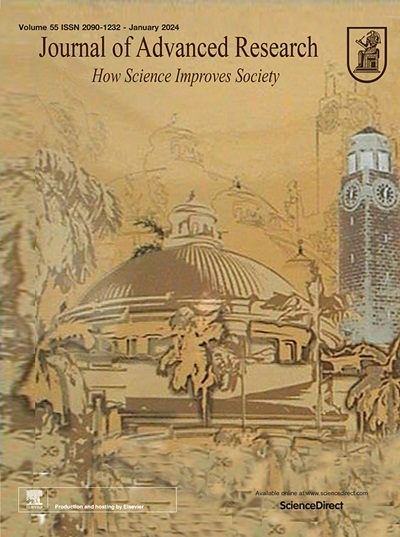Multi-omics analysis of glycolytic reprogramming and ROS dynamics in host-specific responses to Salmonella Typhi infection in mice
IF 11.4
1区 综合性期刊
Q1 MULTIDISCIPLINARY SCIENCES
引用次数: 0
Abstract
Introduction
Salmonella Typhi (S. Typhi), a Gram-negative, serves as the etiological agent of typhoid fever. In contrast to other Salmonella serovars, S. Typhi exclusively infects humans. However, the molecular interactions it engages in with the host immune system remain inadequately characterized. This study adopts a multi-omics strategy to elucidate the immune and metabolic dynamics within the murine spleen during S. Typhi infection.Objectives
To identify and analyze transcriptomic, proteomic, and metabolomic alterations in the spleens of mice infected with S. Typhi. By comparing these host responses with those elicited by Salmonella Typhimurium (S. Typhimurium), a closely related serovar possessing a broad host range, the study seeks to uncover the unique metabolic reprogramming and immune-modulatory mechanisms specific to S. Typhi infection.Methods
A multi-omics strategy was adopted, integrating transcriptomic, proteomic, and metabolomic data obtained from the spleen tissues of S. Typhi-infected mice. S. Typhimurium was utilized as a comparative control to distinguish host-specific responses. Additionally, the dynamics of reactive oxygen species (ROS), which play pivotal roles in mediating immune responses during infection, were examined.Results
Integration of multi-omics datasets demonstrated distinct metabolic and immunological responses orchestrated by S. Typhi infection. Host metabolism was reprogrammed by S. Typhi through the upregulation of glycolysis and the facilitation of glucose-to-pyruvate conversion, while concurrently suppressing the tricarboxylic acid cycle (TCA cycle). These changes culminated in increased lactate accumulation, and augmented ROS production, all of which were associated with intensified immune activation.Conclusion
S. Typhi infection induces metabolic reprogramming in the host, characterized by a redirected glycolytic flux and altered pyruvate metabolism. This metabolic shift enhances ROS production and modulates the immune response. These findings yield novel insights into host-specific strategies employed by S. Typhi and highlight the significance of metabolic remodeling in immune defense, thereby presenting potential therapeutic targets for combating typhoid fever.

小鼠对伤寒沙门氏菌感染的宿主特异性应答中糖酵解重编程和ROS动力学的多组学分析
伤寒沙门氏菌(S. Typhi)是一种革兰氏阴性,是伤寒的病原。与其他沙门氏菌血清型不同,伤寒沙门氏菌只感染人类。然而,它与宿主免疫系统的分子相互作用仍然没有得到充分的表征。本研究采用多组学策略来阐明鼠伤寒沙门氏菌感染期间脾脏内的免疫和代谢动力学。目的鉴定和分析斑疹伤寒沙门氏菌感染小鼠脾脏的转录组学、蛋白质组学和代谢组学改变。通过将这些宿主反应与鼠伤寒沙门氏菌(S. Typhimurium)引起的反应进行比较,该研究试图揭示鼠伤寒沙门氏菌感染特有的独特代谢重编程和免疫调节机制。鼠伤寒沙门氏菌是一种具有广泛宿主范围的密切相关血清型。方法采用多组学方法,整合斑疹伤寒感染小鼠脾脏组织的转录组学、蛋白质组学和代谢组学数据。鼠伤寒沙门氏菌被用作比较对照来区分宿主特异性反应。此外,还研究了在感染期间介导免疫反应中起关键作用的活性氧(ROS)的动态。结果多组学数据集的整合显示了伤寒沙门氏菌感染介导的不同代谢和免疫反应。伤寒沙门氏菌通过上调糖酵解和促进葡萄糖-丙酮酸转化,同时抑制三羧酸循环(TCA循环),对宿主代谢进行重编程。这些变化最终导致乳酸积累增加,ROS生成增加,所有这些都与增强的免疫激活有关。斑疹伤寒感染诱导宿主代谢重编程,其特征是糖酵解通量重定向和丙酮酸代谢改变。这种代谢转变增强了ROS的产生并调节了免疫反应。这些发现为伤寒沙门氏菌采用的宿主特异性策略提供了新的见解,并强调了代谢重塑在免疫防御中的重要性,从而提出了对抗伤寒的潜在治疗靶点。
本文章由计算机程序翻译,如有差异,请以英文原文为准。
求助全文
约1分钟内获得全文
求助全文
来源期刊

Journal of Advanced Research
Multidisciplinary-Multidisciplinary
CiteScore
21.60
自引率
0.90%
发文量
280
审稿时长
12 weeks
期刊介绍:
Journal of Advanced Research (J. Adv. Res.) is an applied/natural sciences, peer-reviewed journal that focuses on interdisciplinary research. The journal aims to contribute to applied research and knowledge worldwide through the publication of original and high-quality research articles in the fields of Medicine, Pharmaceutical Sciences, Dentistry, Physical Therapy, Veterinary Medicine, and Basic and Biological Sciences.
The following abstracting and indexing services cover the Journal of Advanced Research: PubMed/Medline, Essential Science Indicators, Web of Science, Scopus, PubMed Central, PubMed, Science Citation Index Expanded, Directory of Open Access Journals (DOAJ), and INSPEC.
 求助内容:
求助内容: 应助结果提醒方式:
应助结果提醒方式:


